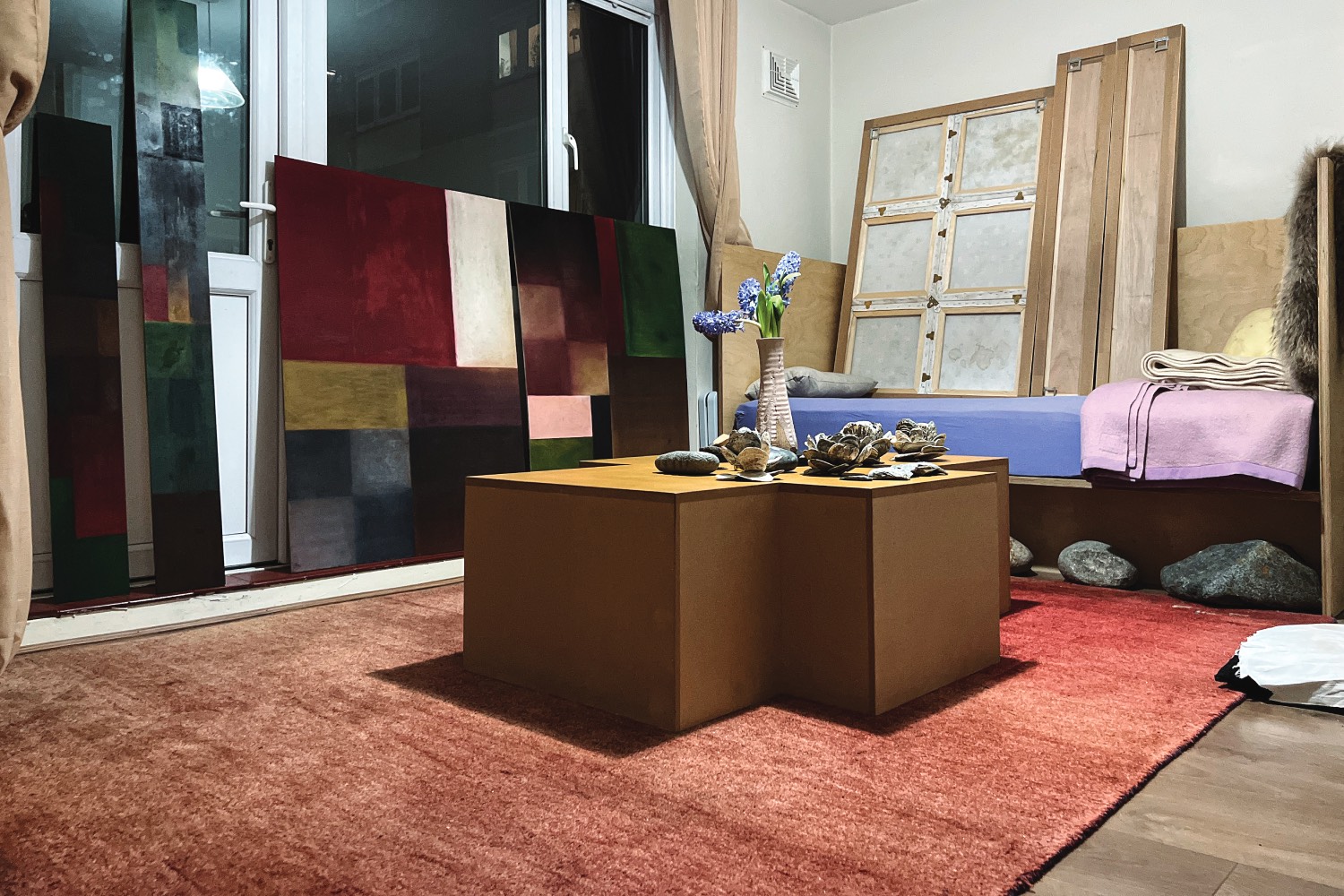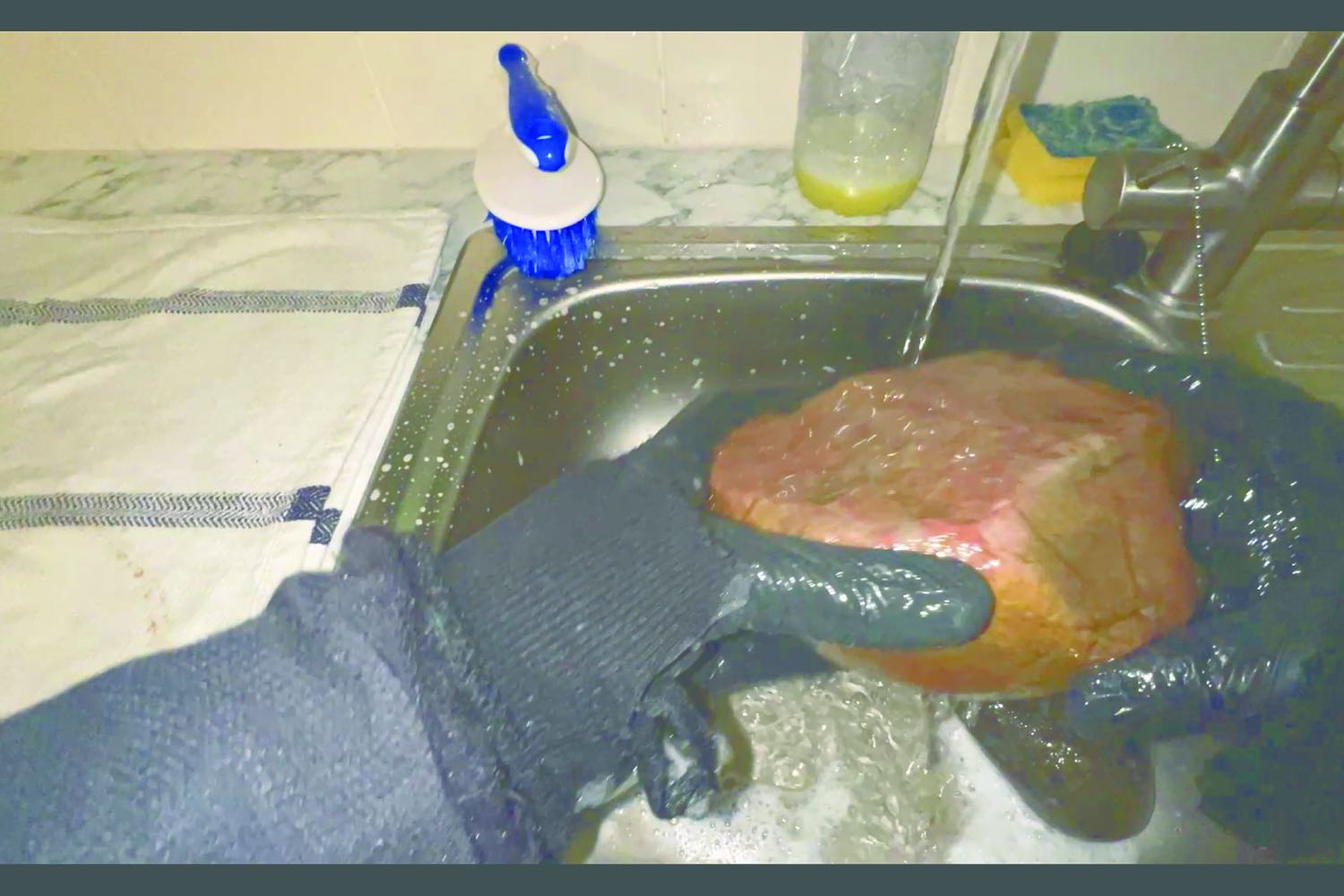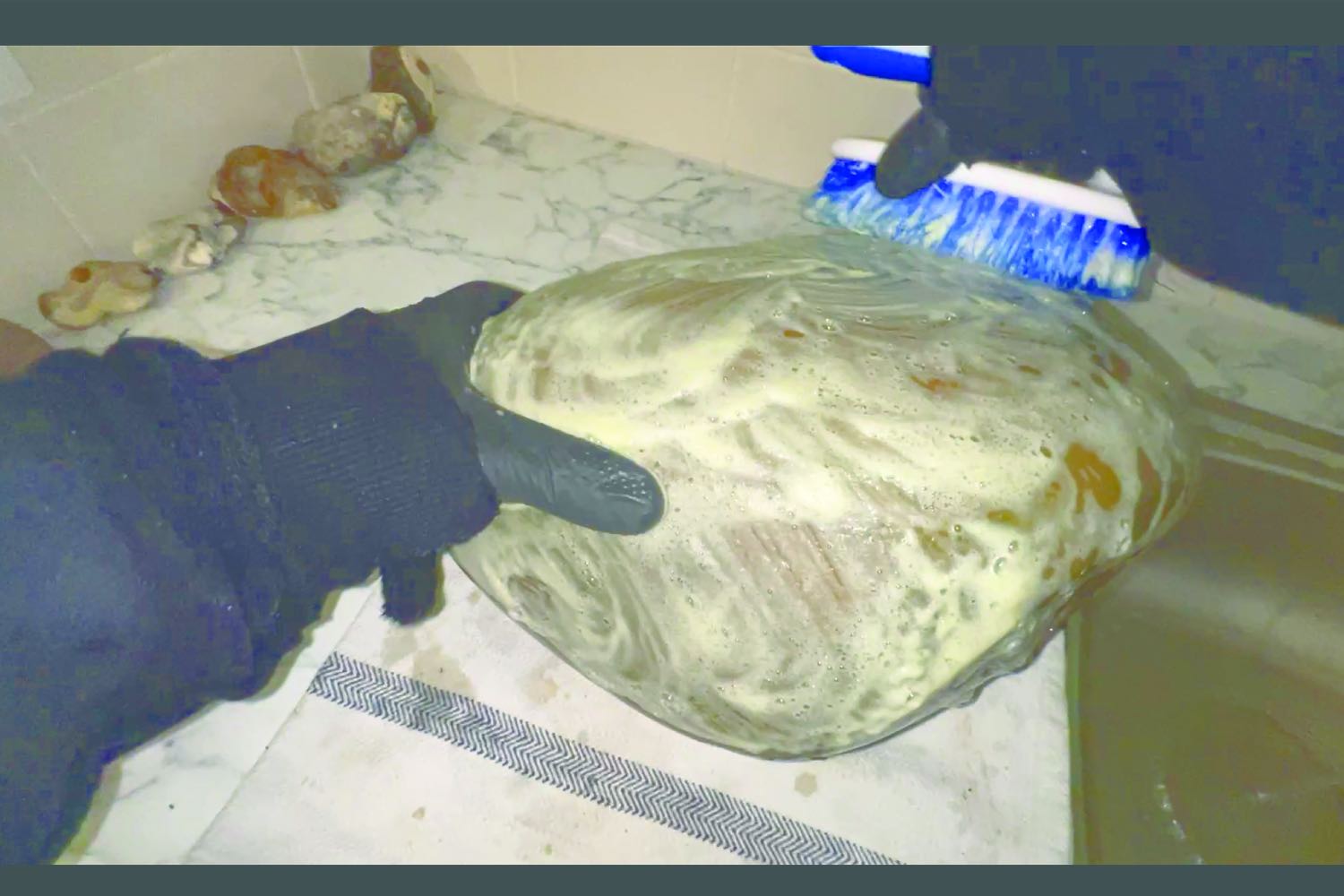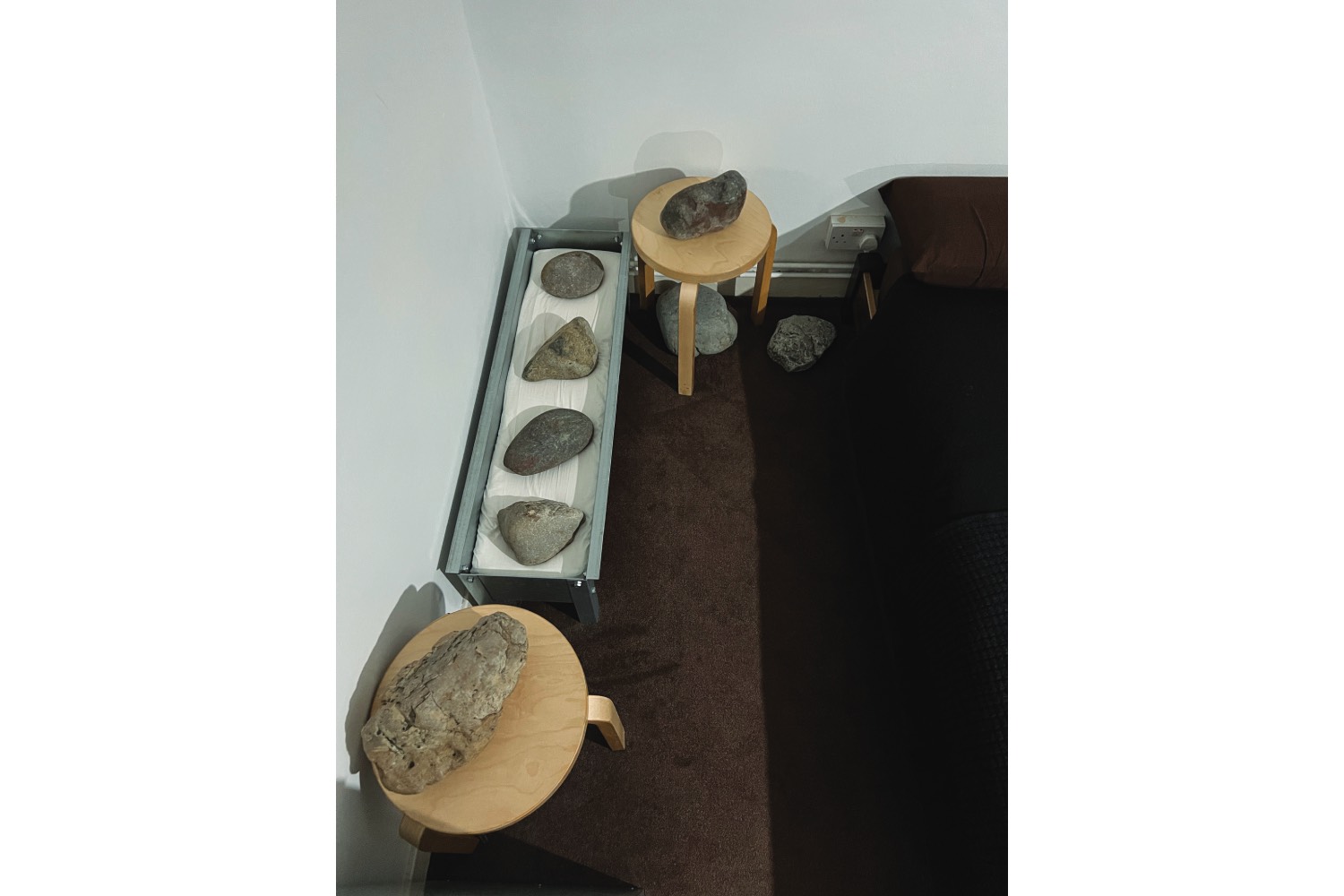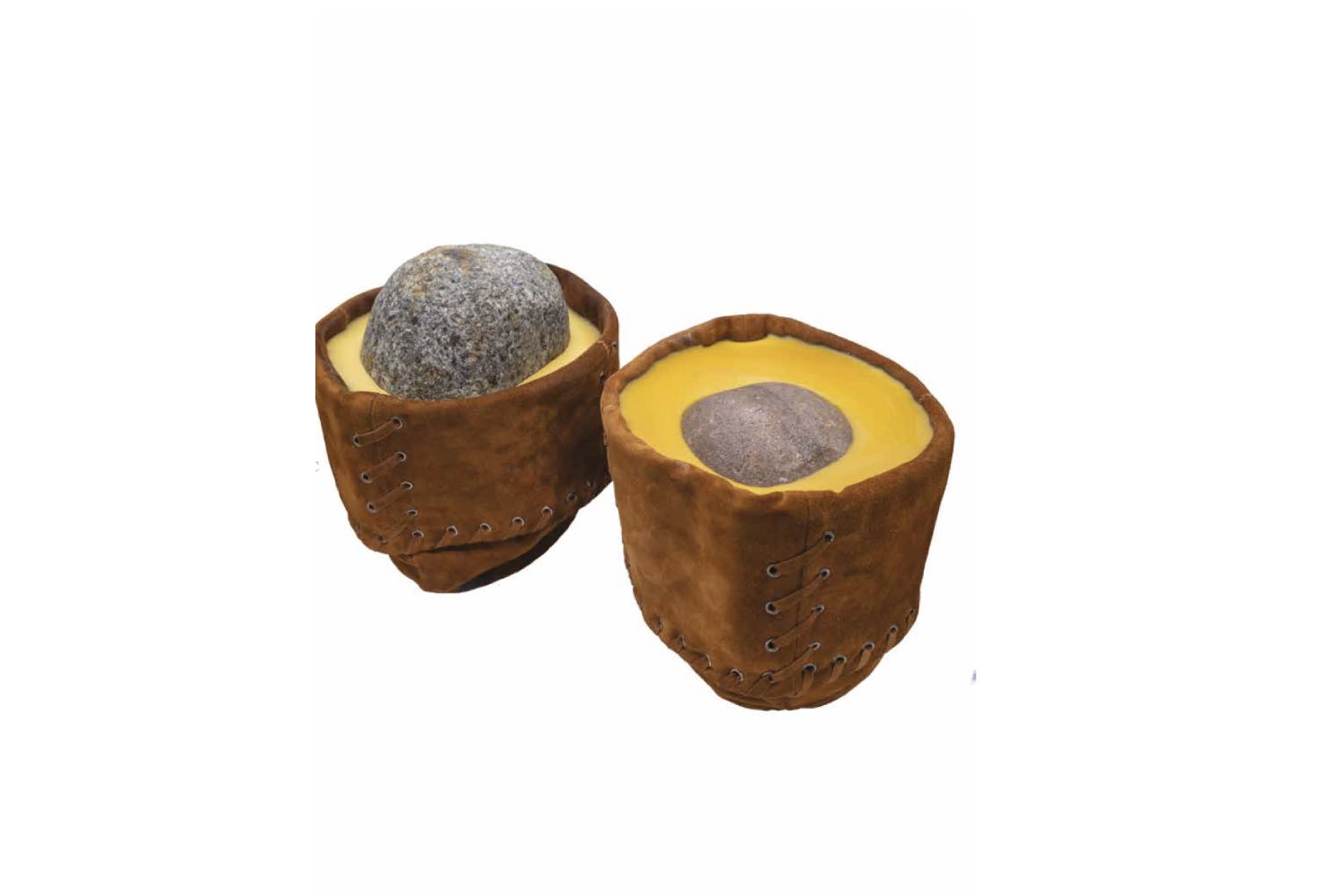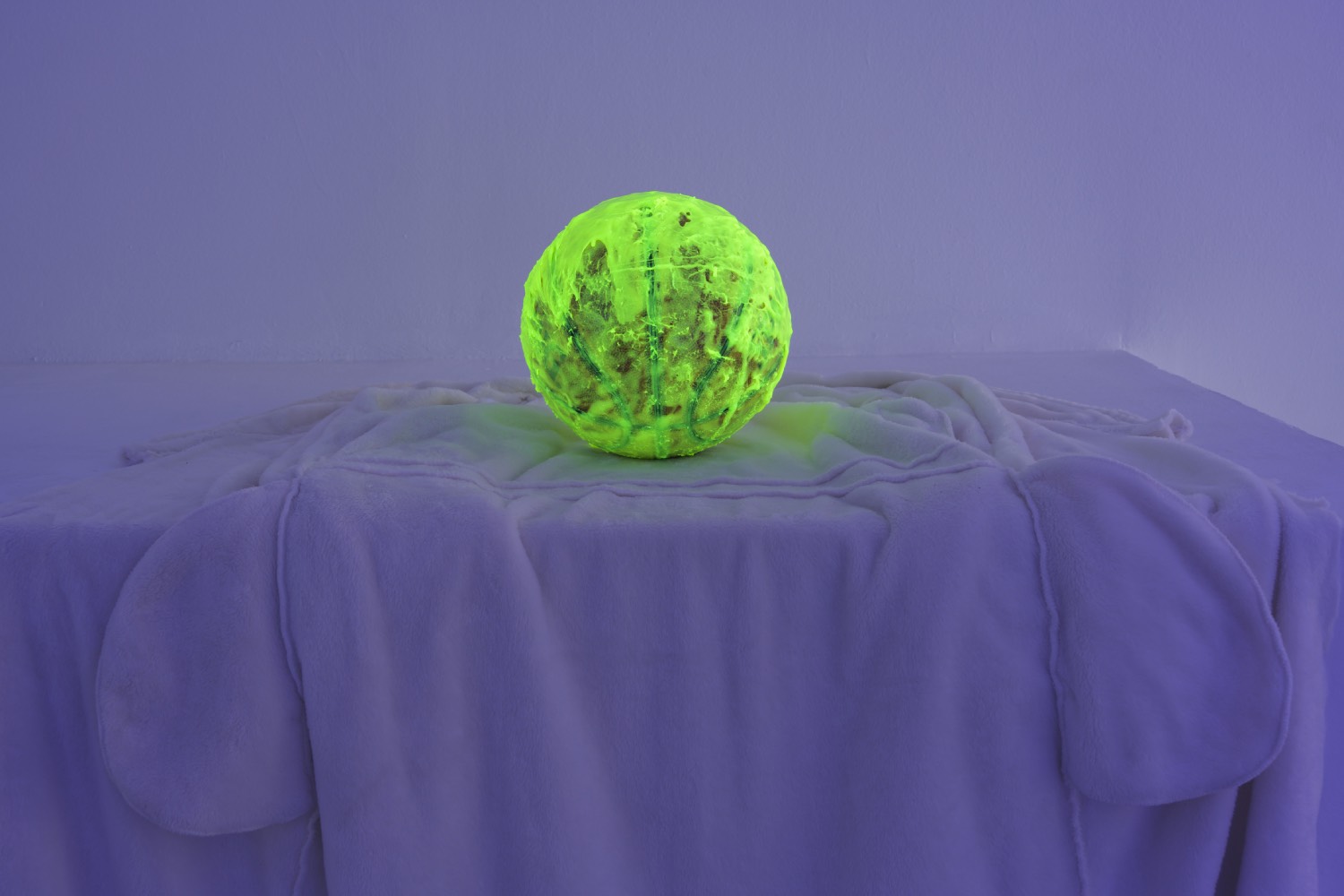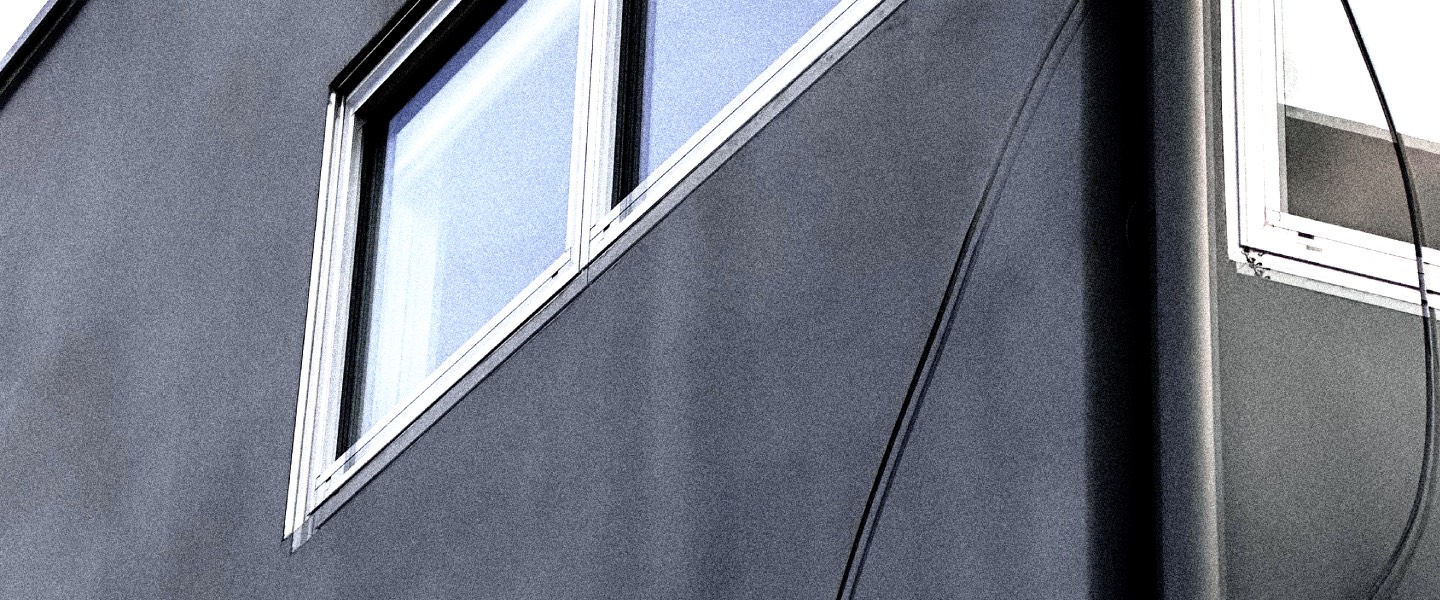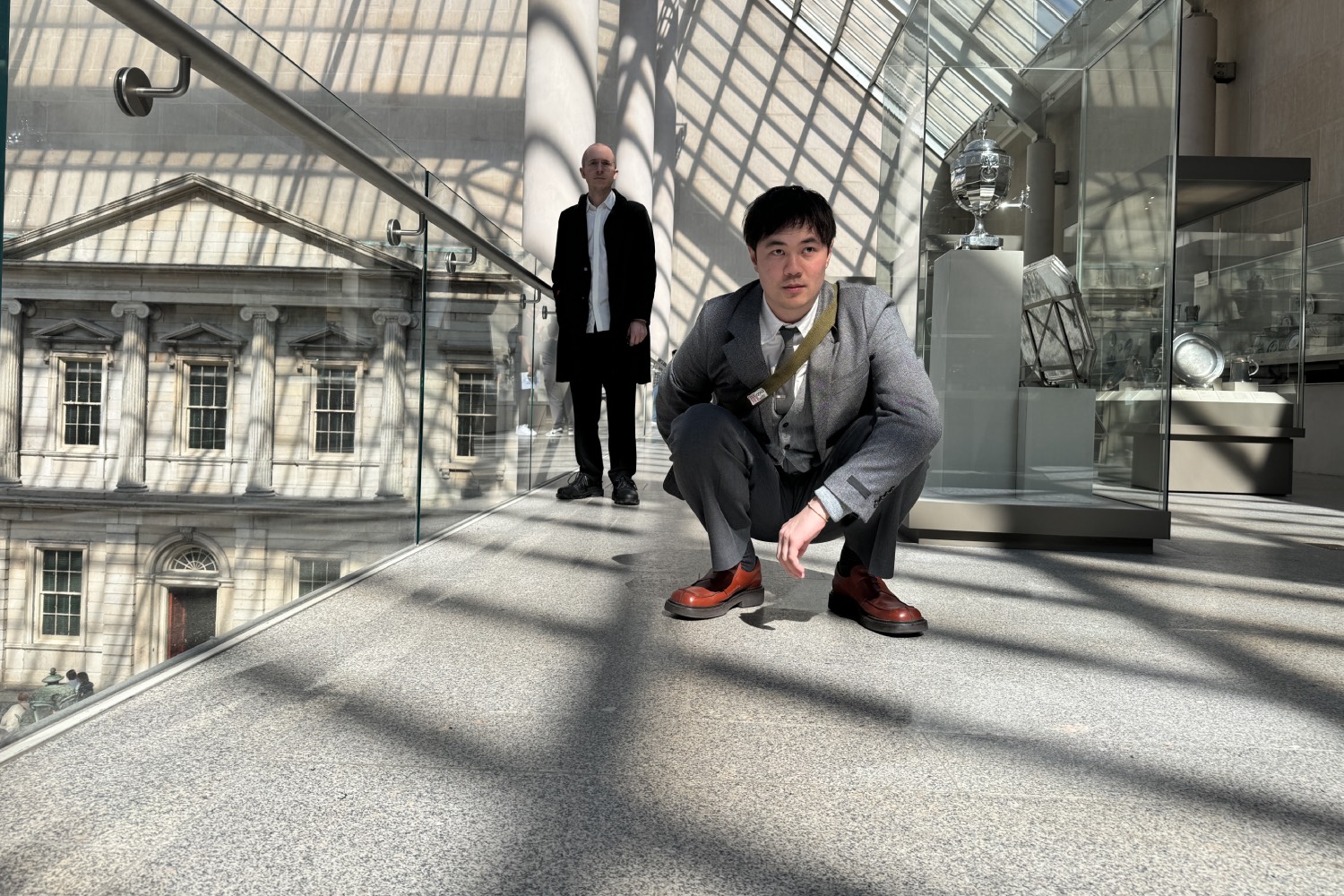Fittingly, the first time I “met” Paride Maria Calvia was when I worked in Donlon Books in London. From the till to the basement, there was a sound chamber in Donlon, so when customers came in to chat to whoever was working, I felt like a fly on the wall when I worked at the desk below the staircase. Paride would come in with self-published books of the photographs that he had taken of strangers on the street, and within the week they would be sold out. To me, this faceless character was a soft Italian-accented voice, an artist, and an Instagram account. I mistakenly thought he was merely the photographer Branka Neves, the author of the books he was dropping off. I was yet to learn that Paride had many faceless personas, and that Branka was only one of them.
Clem MacLeod: You’re kind of a professional enigma. I called some friends today to ask what they think that you get up to, and everyone has different answers. You’re an artist but you work with Kiko Kostadinov, and you also make books. You’re Branka Neves, Paride Maria Calvia, and Vanilla Jellaba. The internet seems to think that you’re a collective.
Paride Maria Calvia: I’ve tried to keep it all separate for a long time. It’s so easy when you can find everything about someone online, but then you don’t look at what they do. You just have a preconception of some sort.
CM Your tactic is for people to not know about you personally, so they can just look at the work for what it is?
PMC Yes. Even for Branka, for example, I like the idea that you can pick up one of the books and you don’t know who it is or what it is. That was the whole idea. When I spoke with Conor Donlon about my first book, Hens and Chicks, the idea was that there was nothing written inside. It was all clean and the dream is that in ten years, or however long, you can pick it up and you can’t find anything about it online and you can just focus on what it is.
CM How long have you been making books? Why did you start taking pictures of people?
PMC The books? Six years, roughly. And photos of people? Maybe twelve. People look so incredible. I like their unawareness of not being in a setup to have their picture taken. I mainly shoot people that are a bit more “advanced in age,” let’s say. So, if they have a lot of layers, it’s for more of a utilitarian reason. Some of them have a crazy fashion sense without being on a platform or wanting to show it. I think we do most of what we do because it’s a response; it’s sort of reactionary. In some cases, I’ve shot the same person ten times in five or six years, and they look incredible every time. They have the same silhouette, but it’s not meant to be something visually pleasurable: it’s just them.
CM A kind of accidental composition…
PMC Not asking too many questions…
CM You recently had those amazing photo albums that you were selling at Donlon Books.
PMC Yes. I collected photo albums from markets. I just printed photos so that then each one of them had individual additional photos. I wouldn’t say they were “repurposed,” but just put out in a different way. There was a box that was covered in aluminum foil and had two albums vacuum sealed inside. These ones were even more about time and place. It’s not about the edition or making a lot of copies of copies of something.
CM And the rocks are what you’re working on at the moment?
PMC Yes, for the last three years I’ve been collecting rocks and painting. I am mainly concerned with establishing a sense of continuity by applying and morphing leftovers, found materials throughout my practice without having to always start from new raw matter.
CM Do you feel like they all weave into each other, all of the different projects? How are the rocks a progression from your previous work?
PMC Before it was projects, obsessions and things, but it was never thought out like this. This is a practice. Previously, it was about exploring myself and doing stuff without thinking too much, which has been at the base of everything. In the past three or four years, there’s been more of a focus, and everything I do is merging together. My house has work everywhere. The rocks, they now belong to a space. I’ve also been working with both of my cats quite a bit. They don’t have much fur on their stomach, so they tend to secrete oil in those areas when they rest on their belly for a long time in the same spot leaving faint oil marks. There are repeating stations where they rest and where they go, where I’ve left canvases for them to lie on and collect their beautiful secretions. [He turns around two large canvases that are resting against the wall, consisting of grids of smaller canvases] This was maybe took six months of the cats lying on the canvas, and these two about five months each. I like this mixture between organic and the guidance provided by its nature. So, although there is a part of trying to control it – because I would move the canvases around a bit to allow different patterns to form – on the other side of it is also this idea that there cannot be full control. It’s important to retain the sense of nature in this context.
CM That feels like a thread in all of your work.
PMC I think I could get lost if I had to control every aspect. There are always a million avenues, so you end up getting stuck in a million.
CM You have to surrender.
PMC The confinement gives you a bit of direction, a guideline, but then you know that you can cross the line a tiny bit and it will still be okay. It’s like grids in a way. And that helps because it feels like being in some kind of boundary. I begin here, in the middle of the boundary, and then I just let it organically move freely. With painting through grids, it gives me a sense of being within some sort of schemes. It gives a false sense of order to placate the mind but then when you look closer, if you go next to the canvas, perfection does not exist. [The cat comes in] Hello, Majo!
CM This idea of having the grid but then also not being confined by anything. Not being defined by anything.
PMC The grids are for me, to help me. It’s not about the beauty of a geometrical situation for me. I know where the border is, but it’s only for that. The grid gives you a starting point and it makes you feel like there is a sense of control.
CM I had the word “control” in my head, but didn’t want to use it. I knew that that’s what you were getting at. It’s kind of like that thing where you start cleaning something and then you realize how filthy it is. So, you try to assert control over something, but then surrendering to the fact that you can’t have control over anything. I was going to ask you about cleaning the rocks. Do you just scrub them with water, or do you have a specific solution?
PMC I have a mixture of vinegar and a specific soap. I love the smell. I’m going to actually show you something. Smells are my newfound obsession.
[He brings in a small roll-on bottle, which I assume will be essential oils, but smells more like a pissy forest.]
CM That smells like a river.

